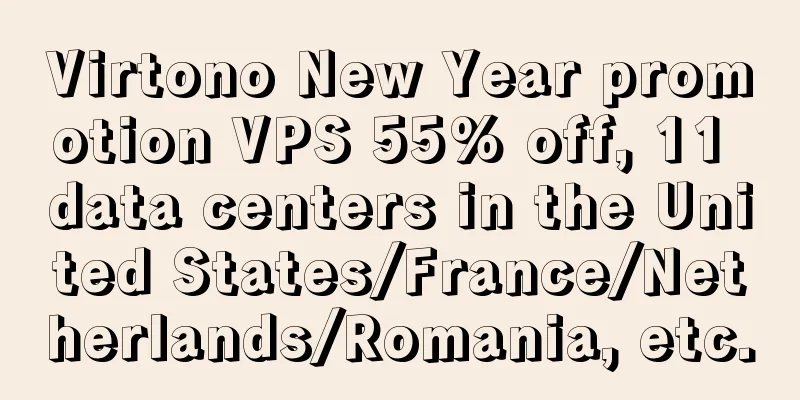From MPLS to the Internet: Enterprise Network Optimization in the New Era of WAN

|
There is no doubt that WANs look different than they did a decade ago. Today, many large enterprise WANs include multiple underlying technologies from multiple vendors, including Infrastructure as a Service (IaaS), Software as a Service (SaaS), and Unified Communications as a Service (UCaaS). In my opinion, there are four major forces influencing the evolution of WAN from MPLS to the Internet.
Data centers are movingIn recent years, enterprises' data centers have been migrating. In 2019, TeleGeography surveyed 64 large multinational companies and found that while about one in ten companies still keep all of their data centers on-site, nearly one in five have moved away from their local area. Most enterprises have a hybrid configuration of on-premises and in the cloud. But as a result, most enterprise IT infrastructure teams are seeing a shift in traffic patterns away from hubs connected to MPLS-based intranets. Cloud delivery modelMost enterprises are now multi-cloud, too. Nearly three-quarters of WAN survey respondents have two or more IaaS partners. Additionally, these enterprises are using multiple methods to connect to their IaaS providers. Two out of five enterprises are primarily Internet connected. This is outpacing the explosive growth of SaaS/UCaaS offerings in the enterprise. It doesn’t make sense to push all this Internet-native traffic to central breakouts over expensive MPLS circuits. So even before enterprises started adopting software-defined wide-area networks (SD-WAN), there was pressure to move traffic to local Internet breakouts. SD-WAN adoptionIn 2018, less than one in five enterprises had adopted SD-WAN. By 2020, that proportion had doubled to more than two-fifths. A quarter of respondents were in the pilot or rollout phase. Why are these companies adopting SD-WAN? The two main reasons are the need to increase site capacity and to select alternative products for the ground floor. Lower Internet costsUndoubtedly, the price difference between MPLS and Internet alternatives also contributes to the desire of enterprises to increase capacity and use alternative products. Survey data shows that the port size of MPLS is smaller than that of Internet. Its enterprise service pricing research also shows that there is still a gap between DIA and MPLS port pricing, not to mention that DIA generally does not require additional access line charges while MPLS does not. What should WAN managers do in the post-MPLS era?All this points to a clear trend that enterprises are relying less on MPLS and more on the Internet. In 2018, 82% of WAN Manager Survey respondents had sites running MPLS. By 2020, that number dropped to 58%. DIA and broadband have also gained ground in the same period. These factors have pushed companies’ WANs from MPLS to the Internet. But what impact does this have on WAN managers and their vendors? First, WAN managers must consider the geographic footprint of their cloud service providers (CSPs), not just their own data center sites. It is very important to keep a close eye on the CSP's footprint expansion. Enterprises must also choose data center locations from among thousands of sites operated by hundreds of different providers. Data centers vary not only in the cost of power, cross-connects, and rack space, but also in CSP access, network provider presence, and ability to reach a switching office or fabric provider. This brings me to my final new concern. WAN managers must evaluate what happens to their traffic after it leaves the office over the most efficient Internet connection. Performance in the "internet middle," once a telco issue on MPLS networks, is now a concern for enterprises. Whether choosing a Tier 1 Internet Service Provider (ISP), using a Network as a Service (NaaS) provider, an OTT mid-path optimization tool, or joining a peering exchange, WAN managers now have a whole new set of vendors or solutions to evaluate to ensure end-to-end performance. The key now is how WAN vendors – whether telcos, system integrators (SIs), managed service providers (MSPs), or novel solutions – can address and process these changes together with multinational enterprises. |
<<: Five disruptive features of 6G networks
>>: Telecom APIs: A critical IT tool for expanding services and improving customer experience
Recommend
Three trends driving cyberattacks in 2024
Ransomware claim activity is set to grow more tha...
How to resolve the conflict between 5G intermediate frequency and satellite C band?
At present, various regions continue to accelerat...
Hosteons: Free upgrade to 10Gbps ports in Los Angeles/New York/Dallas, KVM annual payment starts at $21
In January this year, Hosteons began to provide 1...
Security Talk丨How far are we from 5G?
[[267324]] Security officials from governments ar...
Network upgrades you should consider in 2021
As 2020 winds down and the new year dawns, it pro...
CloudServer: $10/year-1GB/20GB/1TB/Los Angeles & Chicago & New York data centers
Netizens reported that CloudServer has a special ...
Security monitoring and observability capability building based on system operation experience
Observability refers to the ability to measure th...
FCC authorizes first batch of 6GHz WiFi devices
The FCC has reportedly authorized the first batch...
Tribute to hackers | Review of the exploration of memory virtualization
[[415610]] Cloud and virtualization Cloud computi...
RackNerd latest promotion starts at $11.38/year, San Jose/Seattle and other data centers
RackNerd has launched a new promotion for the US ...
It has been almost three years since number portability was implemented. Who is the winner among the three major operators?
Since the three major operators in my country occ...
A brief analysis of the Time Sensitive Network (TSN) technology for deterministic networks
Author: Lu Yingchuan, unit: China Mobile Smart Ho...
5G and edge computing are a perfect match
Enterprise IT leaders have heard a lot about edge...
Ming-Chi Kuo: The next major upgrade to iPhone 5G is expected to arrive in 2023
On May 10, according to media reports, mobile ana...
McKinsey: 5G development is not fast, and 5G upgrades will reach a climax in 2022
The 5G era is coming. How does the industry view ...









